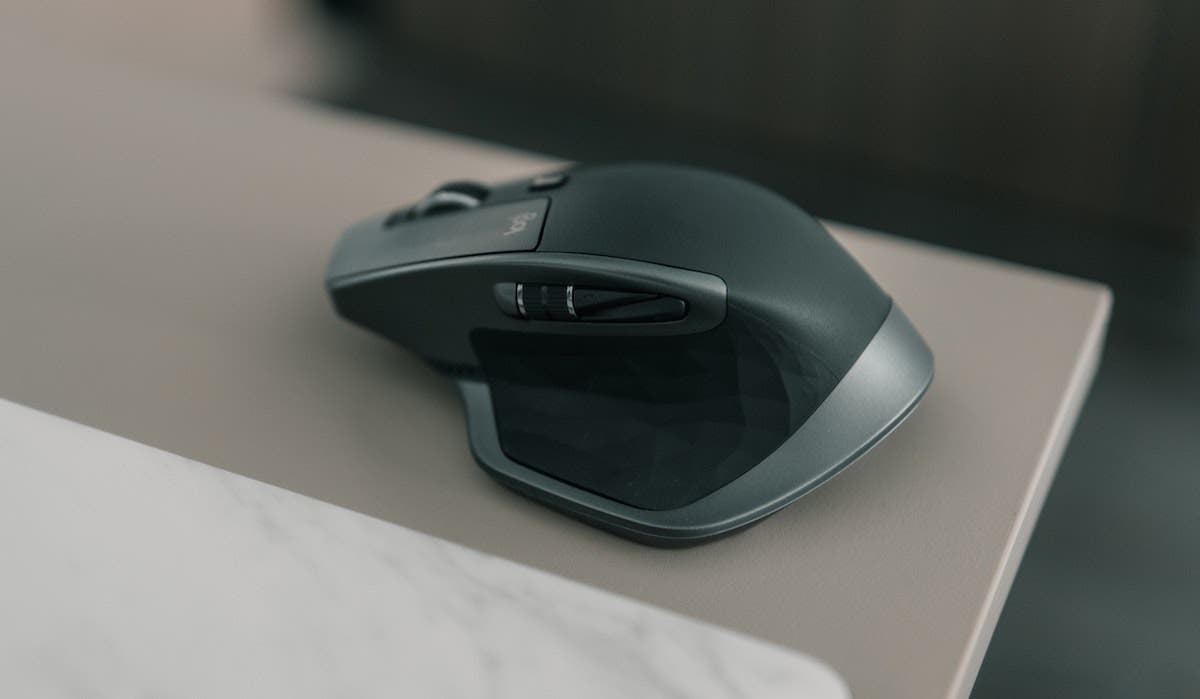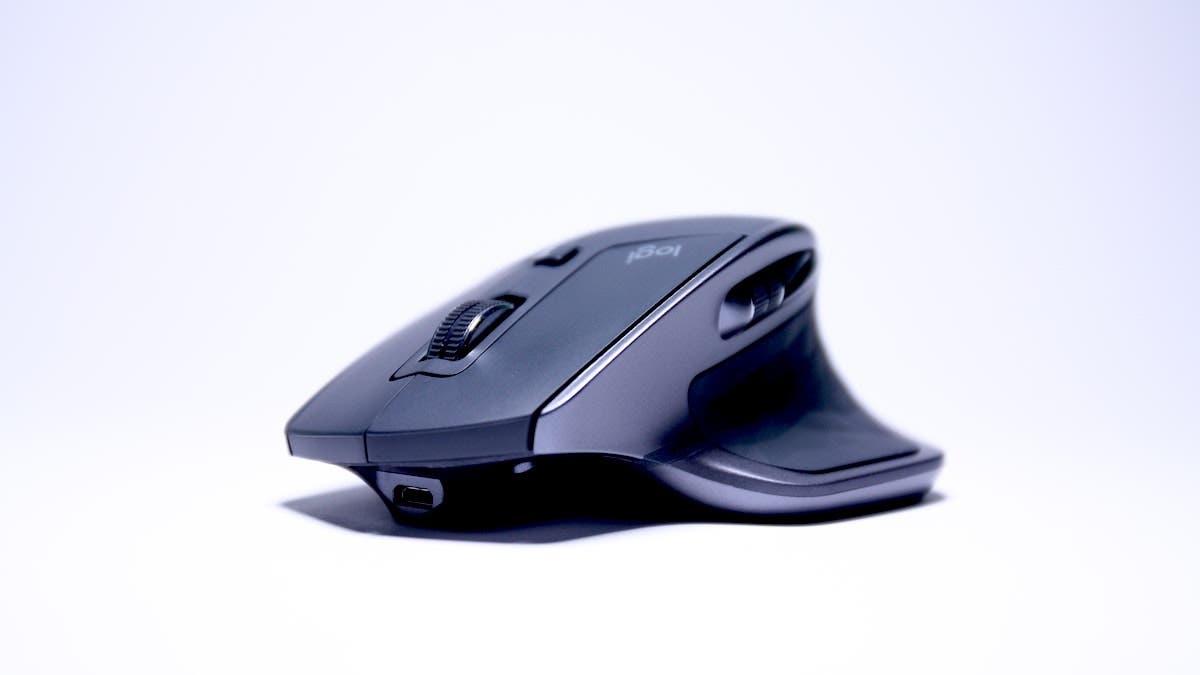Nowadays, one can easily spend a good few hours every day sitting in front of a computer. Whether you edit photos, create online portfolios, discuss with potential clients, or check your social media account, a keyboard and mouse are the two tools you use the most. They are responsible not only for your efficiency and speed but also for your comfort, posture, and overall health.
It may seem to you that the mouse controls only the small arrow on the screen. In reality, it controls the position and rotation angle of your wrist, shoulder, and spine.Thus, investing in a high-quality ergonomic mouse is a very smart idea with long-term benefits.
What is an Ergonomic Mouse?
Similar to an ergonomic keyboard, an ergonomic mouse is designed for your comfort and safety. Yes, it has all the functions of a regular mouse, but its shape, dimensions, and design aim to keep your hand and wrist in a natural position. Thus, an ergonomic mouse may look strange and bulky. It may take you some time to make the transition from using a regular mouse to an ergonomic one.

The main advantage of an ergonomic mouse is keeping the wrist in the handshake position (i.e. the thumb facing up), which is more natural and easy on the wrist. The handshake position also opens up the shoulder and improves your posture. And because ergonomic mice are wireless, you can keep them as close or far away from your body as you need. The vertical position also helps you train the off-hand to use the mouse and, therefore, avoid creating asymmetries in your body’s muscle structure.
In the beginning, the biggest fans of ergonomic mice are people suffering from health issues — such as carpal tunnel syndrome — and can’t use a regular mouse without experiencing acute pain. Meanwhile, people understood it’s better to prevent than to heal. They prefer technology that keeps them healthy and use it for any activity.
How to Choose an Ergonomic Mouse
The best advice for choosing any type of gear — whether it’s a camera, lens, keyboard, or mouse — is to consider your workflow, lifestyle, and body features. Regardless of reviews and peers’ opinions, what works for other people doesn’t always work for you. Try to test the product before buying it either by borrowing it from a friend or spending some time in the shop. If you’re on the hunt for an ergonomic mouse, check out the following features and see if they fit you.
Vertical Design
An ergonomic mouse with a vertical design maintains the hand in the handshake position. It may support your hand better, but it needs to fit your anatomy. Make sure the wrist is straight and not pressured in any way. Also, check that you reach the buttons comfortably.
If you want to be able to use the mouse with either of your hands, look for an ergonomic vertical mouse with an ambidextrous design. Unlike a regular mouse, a vertical mouse may be asymmetrical and more challenging when using the off-hand.
Connectivity
For an ergonomic mouse, connectivity means wired or wireless. A wired mouse adds a cable more to your desk, but it uses the computer as a power source and doesn’t require batteries. It’s also easier to match in terms of system requirements and harder to lose.
A wireless mouse on the other hand is more versatile in terms of where you put it on the desk. For example, it goes seamlessly from the right hand to the left one. But it is powered by batteries and can let you down when you need it most. It’s also harder to fiddle with your system.
Programmable Buttons
Having programmable buttons on your mouse helps you customize your gear and become more efficient. It also helps when using both hands to operate the mouse because you can simply change the functions of the buttons instead of changing how you use your fingers.
Trackball
A trackball allows you to move the mouse pointer on the screen without moving your wrist. It is a ball you control with your thumb or other fingers, depending on the mouse model. Although a thumb-operated trackball is more intuitive and easy to use, these mouse models are usually designed for right-hand users. Fingers-operated trackball mice work for both hands.
The trackball mouse activates different muscles than the regular mouse and helps you avoid cramps and wrist aches, especially when using the mouse for a long time.

Best Ergonomic Mouse in 2023
In 2023, you have plenty of ergonomic mouse options. Some are versatile. Others are designed for a single purpose. Some check all the boxes. Others fit any pocket. Check out our selection and find inspiration in choosing the best mouse for your requirements.
Best Overall: Logitech MX Master 3S Wireless Mouse, Pale Gray
The MX Master 3S is quiet, fast, and precise. It’s a wireless ergonomic mouse with adjustable tracking sensitivity, 1,000 lines per second scrolling, and a thumb wheel. At the same time, it has a reasonable price and is made of 22% post-consumer recycled material. The battery lasts for 70 days on a full charge.
Pros:
- Quiet
- Wireless
- Multi-OS Compatibility
Best in Long Battery Life Category: Logitech Lift Vertical Ergonomic Wireless Mouse, Graphite
With a sleek vertical design and a soft textured grip, Logitech Lift Vertical is the perfect option for those looking for optimal comfort. The mouse is designed for small to medium-sized hands and features customizable buttons, multiple scrolling modes, and an easy switch button to go from one device to another. A single AA battery powers the mouse for up to 2 years thanks to its high-quality connectivity features.
Pros:
- Vertical design
- Wireless
- Programmable buttons
Best Adjustable Mouse: Contour Design Right-Handed Wireless Unimouse Mouse
If you are right-handed and want an ergonomic mouse that adapts to you rather than expecting you to adapt to it, Unimouse is your answer. It’s fully adjustable to your hand and body angle thanks to a hinge mechanism and articulating thumb support. The mouse has six programmable buttons and comes with a rechargeable battery.
Pros:
- Adjustable body angle and thumb rest
- Wireless
- Programmable buttons
Best for Any Budget: Microsoft Ergonomic Mouse
Microsoft Ergonomic Mouse is budget-friendly, durable, and lightweight. Although it doesn’t have a vertical design, the mouse has two programmable buttons and allows you to use either of your hands. It’s a wired mouse, so you don’t have to worry about battery life.
Pros:
- Affordable
- Easy to use with both hands
- Programmable buttons
Best Trackball Mouse: Logitech MX ERGO Plus Wireless Trackball Mouse
Designed to offer 20% less muscular strain compared to a regular mouse, MX ERGO features an adjustable trackball, a precision scroll wheel, customizable cursor speed and accuracy, and a switch to stay connected on two devices at the same time. It’s a wireless mouse and comes with a rechargeable battery.
Pros:
- Adjustable trackball
- Wireless
- Multi-computer workflow
Best in Compact Form Category: Microsoft Sculpt Ergonomic Mouse
It’s not small, but it fits any type of hand. Microsoft Sculpt relieves wrist and forearm pain and offers a more natural position. The mouse features four-way scrolling, a back button, and a Windows button. It’s wired and needs 2AA batteries.
Pros:
- Helps prevent wrist injuries
- Four-way scrolling
- Easy to use
Best Gaming Mouse: Logitech G G502 LightSpeed Wireless Gaming Mouse
The Logitech G G502 is thin, lightweight, and sturdy. It’s perfect for gaming as well as for any other activity because it adapts easily to any situation. For example, it features a tunable weight system, 11 programmable buttons, and a hyper-fast scroll wheel. The mouse is wireless and comes with a rechargeable battery that lasts up to 60 hours without lighting.
Pros:
- Adjustable weight
- Programmable buttons
- Wireless
Conclusion
If you commit to spending a lot of time in front of the computer, do it right and take care of your health from the beginning. Choose a good ergonomic keyboard, mouse, and even chair to help you maintain a correct posture and avoid injuries. You may not feel the pain in the heat of the moment, but you will definitely feel it after a few hours of being in an uncomfortable position. Go for tools that match your body instead of making your body adapt to any tool.






